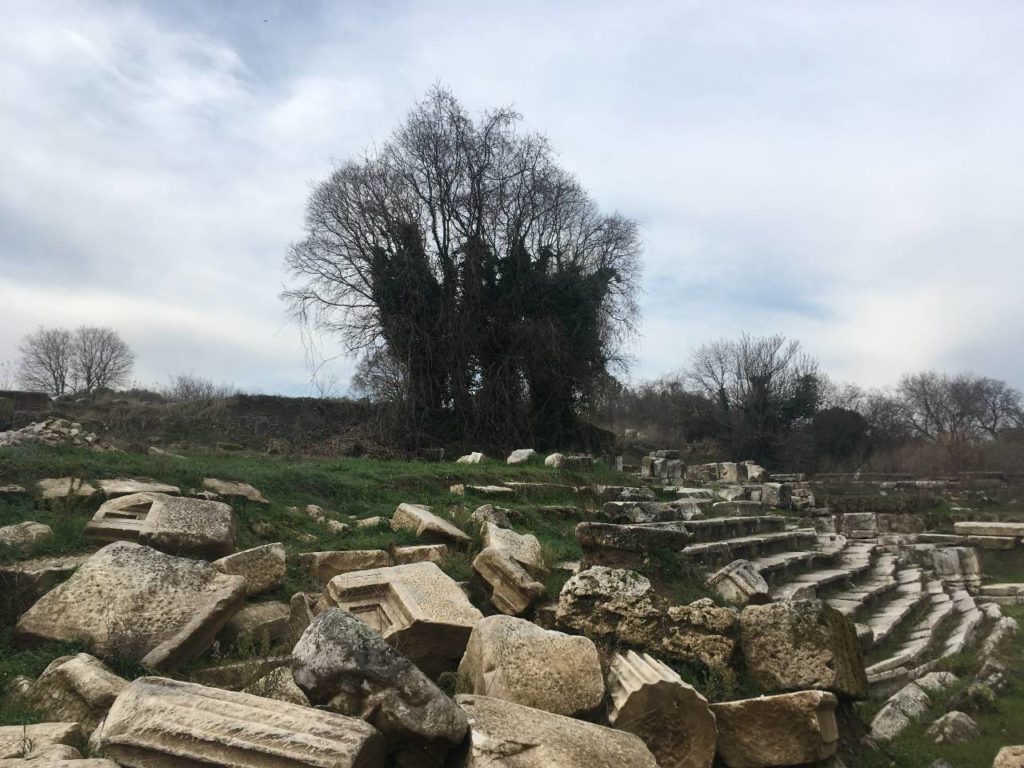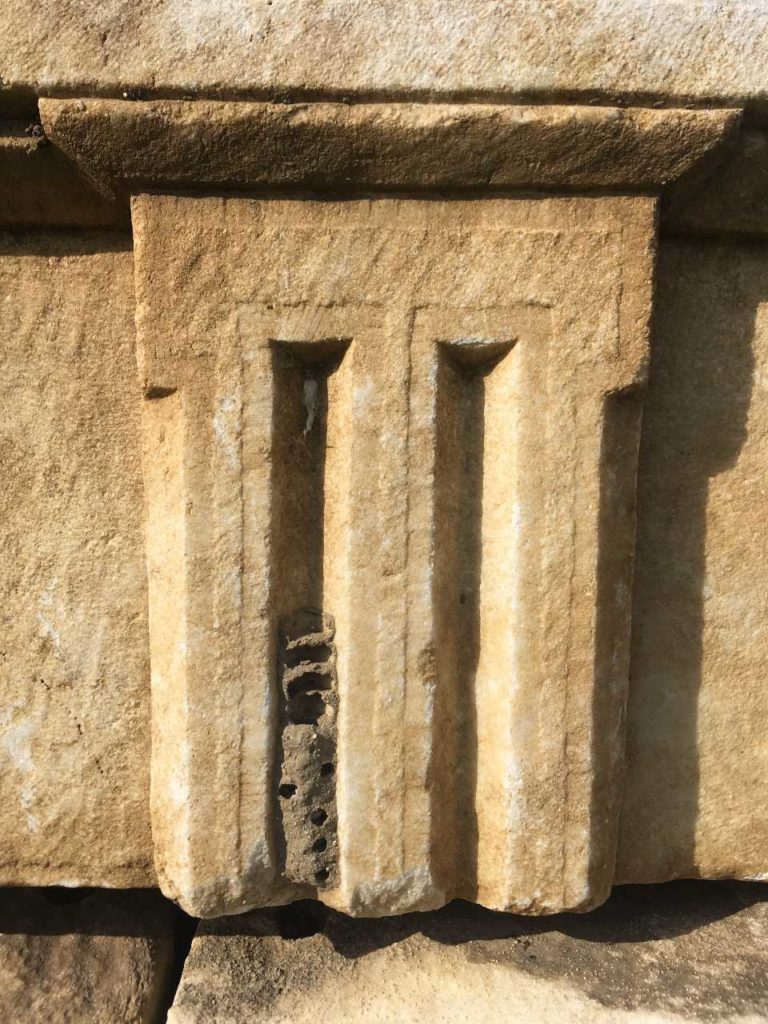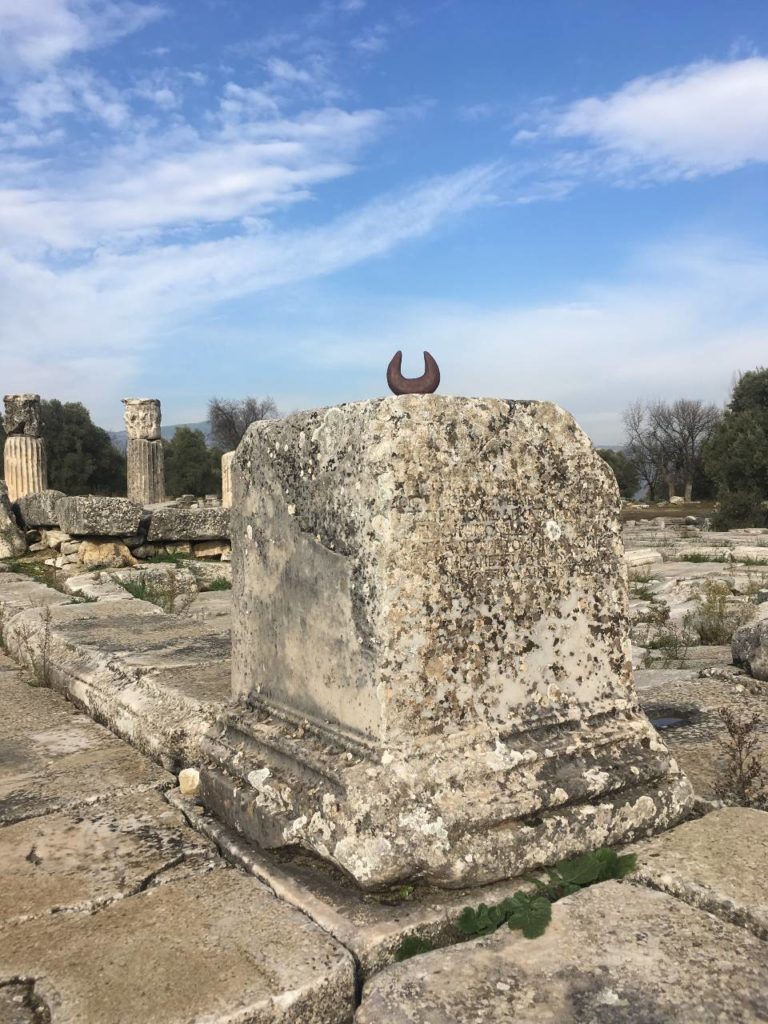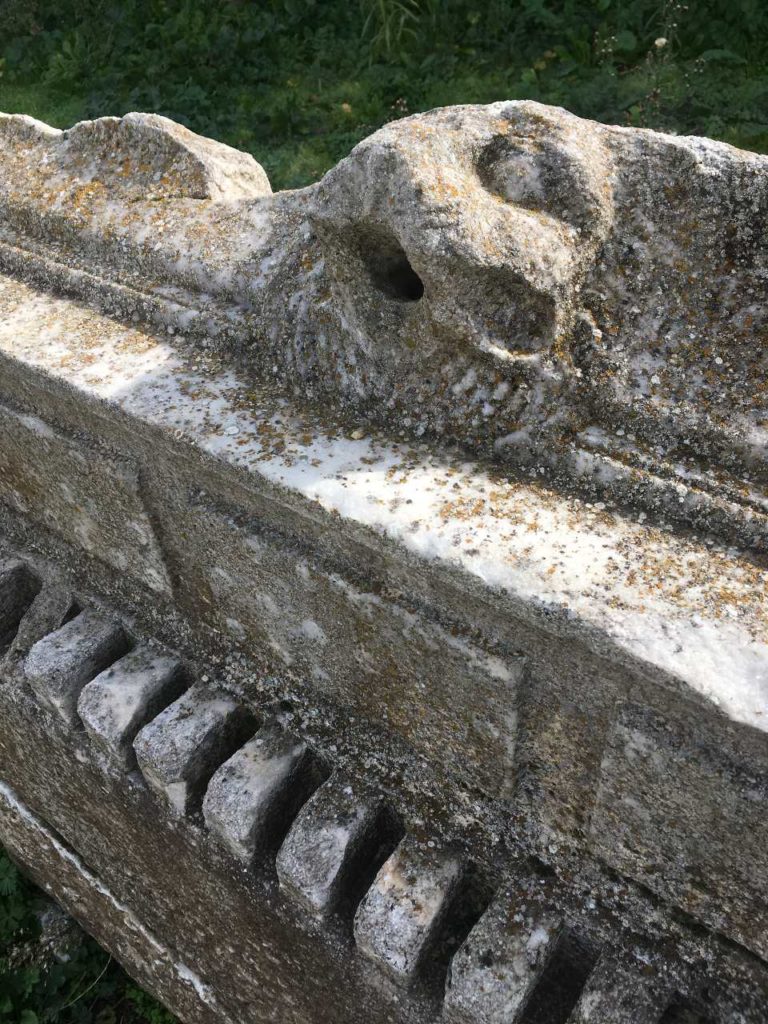Hidden within an olive grove, Hecate sanctuary in Lagina could pass as a secret garden, one filled with a mystical air and esoteric treasures. Once the important religious center of Stratonikea, today, it’s a quiet part of the Yatağan district of Muğla wedged between a highway and a thermal power plant. Could an oracle have predicted such a strange and unsettling future for this place of worship?
Seçkin and I visited in January, a time when nature is usually deep in slumber. Yet the mild climate here gives flora continuous reign without seasonal rest. Only the barren oak trees revealed that it was winter.

Right away, we were enamored by a massive olive tree near the parking lot. This ancient wonder is thought to be around 2,500 years old. Thankfully, it was saved from destruction and transplanted from the power plant grounds to Lagina. We marveled at this mighty ancestor’s thick and twisted body wrapped in mystery.
A Brief History of Lagina
Lagina was first established some 3,000 years ago as an important cult center for the Carians and the people of Stratonikea. This sanctuary was dedicated to Hecate, a multi-dimensional goddess worshiped by the Carians. Once surrounded by walls that have dwindled to ruins, this sacred space was entered through a propylon, a monumental gate entrance. A worshiper could leave the outside world behind as they crossed over into another realm. There was also a temple devoted to Hecate where worshipers could leave offerings for the goddess.
A fascinating fact; Lagina was one of the first archaeological sites excavated in Turkey by legendary archaeologist Osman Hamdi Bey. It was during this excavation that friezes from the temple of Hecate were discovered and can be seen today at the Istanbul Archaeology Museum.

Recently, the temple columns have been restored and excavations continue. There seems to be no end to these ancient places; are they ever fully excavated?
Who was Hecate?
Hecate was a goddess of Anatolian origin. The Carian people valued her many strengths and powers. She took on several identities: sorceress, protector of spirits, assistant in childbirth, gatekeeper of the underworld and guardian of crossroads. Before coming here, I had researched Hecate to learn more about her to grasp a better feeling for her energies that might still linger between the trees. Different interpretations of Hecate exist, both in Turkish and Greek cultures. Some symbols associated with her include the moon, torch, dagger, lock and key.
Each year, festivals were held in Lagina to honor Hecate. The most popular was Hecatesia, a festival that celebrated the goddess’s birthday. Festivities began on the 13th of an unknown month on the night of a full moon. This festival lasted a few days and gifts were given to the people usually in the form of olive oil. Another important event was a key-carrying ceremony. A procession that included a young girl who carried Hecate’s key along the sacred road that connected Lagina to Stratonikea.

Hecate’s Temple
The atmosphere in Lagina felt heavy; thick with secrets and ambiguity. We moved around the site individually drawn to strange shapes and lopsided ruins. What I love about these open-air museums is the touch factor; there are no velvet ropes holding you back.
Just imagine the smells that must have swept through here. Myrrh resin burning in thick, smoky waves, sage smudges, maybe even blood? Perfumed bodies of worshipers who wished to please the goddess with pleasant aromas or the pungent odor of sweaty figures who stood chanting before the sacrificial flames that danced around the altar.
Dedications to Hecate came in many different forms: terracotta, linen cloth, metals (chains or coins) human hair – even a forest. I wondered, when people made these offerings, did they chant or sing a special tune to increase the value of their devotion? Was the item placed facing a certain direction or did the worshiper offer a particular amount, just a lock of hair or a full braid? How long did these dedications remain in the temple before they disappeared and were there ever incidents of stolen offerings?
I had brought along my own offering, a crescent shaped vessel made of unfired, wild clay to leave on the altar within the temple ruins. I chose to use the Tyrian purple clay that I had forged along the sea shore of Turunç. The color felt ideal for Hecate. Darkness mixed with a warm energy. The vessel housed a bundle of dried sage that I burned as a gift of gratitude for letting us experience this marvelous sanctuary.
How many dedications were made to Hecate over the years?

Field Notes
Surveying the site, there were countless, abandoned snail shells everywhere. Was this some kind of omen? We also observed these empty abodes at the nearby sites of Stratonikea and Aphrodisias. Could snails be spirits of the dead trying to find their way back home? Another strange phenomena were tiny nests suspended in corners of carved marble blocks. These minimalist sculptures were likely the handy work of mud wasps considering their building technique. Maybe this was their offering to Hecate.
Evidence of an earthquake is still visible in the temple floor, forever frozen in a suspended wave of broken marble. I always wonder about earthquakes of the ancient world, they seemed so prevalent back then. Many settlements were abandoned and populations relocated due to the major destruction caused by these natural disasters.
On our way back to the car, we saw women collecting wild herbs that grew around the site. Seçkin asked what they were going to use the herbs for and they shared their recipes with us. Did the ancient Carians also use these herbs for their dishes?
We’ve never visited these ancient sites after dark for obvious reasons, but I wondered, what goes on under the veil of night in Lagina? Could this be when Hecate appears to unlock the door to the underworld and guide restless spirits safely onto the next world? Guess I’ll know when the time comes for her guidance.









